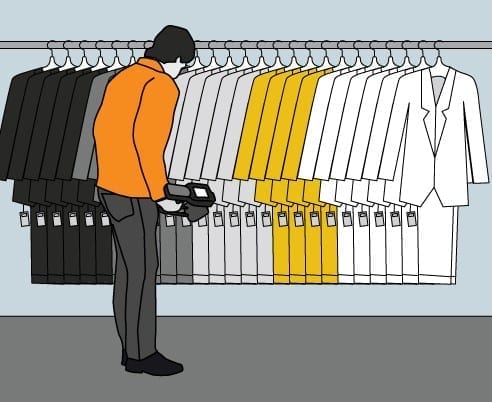101 ON SUCCESSFUL UHF RFID TAG WRITING
Once the decision to adopt RFID in the company’s operations has been made, there are a number of things that needs to be considered. This article discusses matters related to UHF RFID tags and tag writing, as well as provides tips to how to succeed in both writing and reading UHF RFID tags.
A practical guide to UHF RFID tag writing
We start out with discusses the actual tag writing. When initializing the writing procedure, the tag in question is singulated against the desired memory bank contents, usually the EPC bank. By singulating a specific tag, you can be sure that you are writing on the correct tag. Without singulation, the write operation is performed on a randomly selected tag. The writing procedure has several possible outcomes. The desired outcome is, of course, that the writing is successful. But things don’t always go as planned. If a tag doesn’t have enough power to perform writing it may send back a message indicating that the power level is not sufficient or that writing was only partially done. It is also possible that a specific tag is lost from the reader’s field and doesn’t reply at all. In such cases, the tag must be written again or, for example, the tag can be moved closer to the reader to improve the communication link.
One practical advice is to only hold the tag close to the reader that is being written. In this way, the user always knows which tag the writing operation is targeting. The output power of the reader can also be limited so that the reader do not detect other tags, for instance tags lying several meters away from the reader.
A general rule suggests that the maximum writing distance is often only a half of the maximum reading distance. This is because a tag needs more energy to perform a writing operation than a reading operation. The maximum reading and writing distances are affected by the output power, receiver sensitivity, antenna gain, the environment and tag IC and antenna. We have noticed that there has been some development of the writing sensitivity of the tag ICs. Tags equipped with newer ICs have better writing reliability and also the maximum writing distance is significantly improved.

The position and direction / orientation of the tag affect the result of the read and write processes. More specifically, matching polarization of reader and tag antenna affects the communication link. If using a linear polarized antenna, tags should be kept in the right position to be able to be read and written. If the reader antenna is horizontally polarized, the tag should be horizontally aligned.
The CrossDipole devices of Nordic ID have two separate linearly polarized antennas. When switching between those antennas it is possible to read tags in every orientation and still gain from the benefits provided by the linear polarized antennas.
If the polarization is circular, there is a partial mismatch of polarization. This mismatch causes a 3dB (half of the power) loss to the transmitted energy. With this type of polarization, the tag can be in multiple angles and still be read, but the power is not optimally transferred. Typically, fixed readers use antennas with circular polarization because for instance during goods in reading and at the point of exit the tags can be in any position.
Besides the antenna polarization, also metals, liquids and people between the tag and reader affect the reading performance. In practice they block the RF- signals propagation. Furthermore, usually a physically larger tag is easier to be read and write from a longer distance compared to a smaller one. That is because increase in antenna size usually improves the performance of the antenna.
What comes to other equipment in the same area, other readers in use may disturb the performance. In Europe the number of channels is smaller than in the U.S. Therefore, having multiple readers operating in exactly the same channel is more probable in Europe. Of course, DRM (dense reader mode) helps to decrease this problem but it does not solve it completely. It is worth remembering, that frequencies used for UHF RFID may also be used by other radio systems.

Instructions for writing tags from a programmers’ point of view
To perform UHF RFID tag writing successfully, it is extremely important to make sure that the passive tag is located within a strong enough reading area. This is possible by utilizing the RSSI value (received signal strength indicator) defined by the reader. The best way to make sure that the distance between reader and tag is sufficient is to call the tag with as low an output power as possible and then analyze the RSSI value received. Reliable tag writing can be started when an RSSI value high enough has been reached with a low output power. For the writing operation itself, the output power should be maximized to as high a level as possible, in order to ensure that the passive tag gains enough power.
The reliability of tag writing can be enhanced with a RSSI filter in the Nordic ID readers, and it can be separately set for both writing and reading operations. RSSI filtering ensures that in reading mode tags with a too weak RSSI value will not be detected by the reader. In writing mode, RSSI filtering plays a role to ensure that the tag is still within an optimal distance when the writing operation starts.
Did you already read about how the user impacts reading patterns? If not, learn more in our expert article User impact on RFID reading patterns.